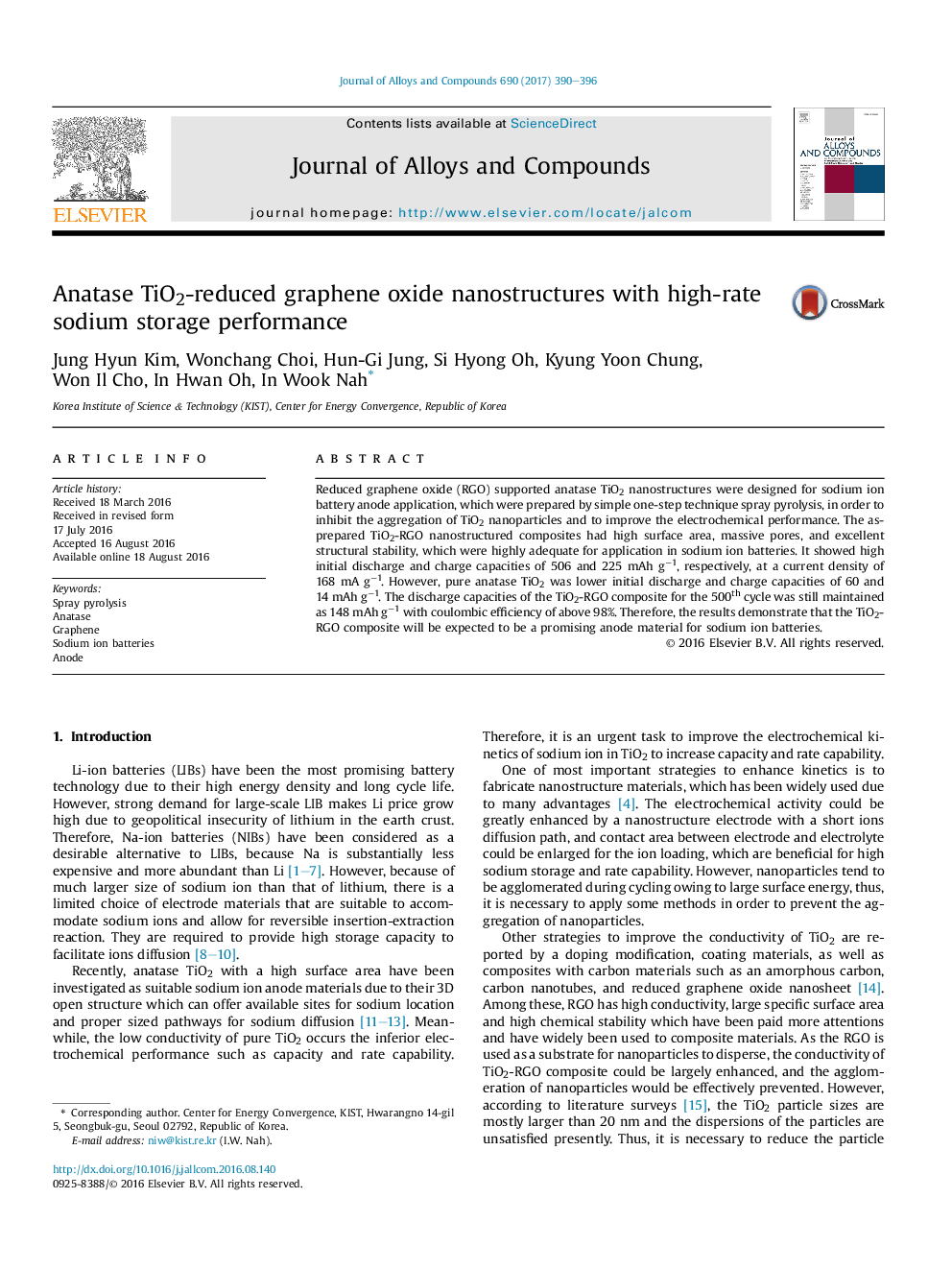| Article ID | Journal | Published Year | Pages | File Type |
|---|---|---|---|---|
| 1604935 | Journal of Alloys and Compounds | 2017 | 7 Pages |
Abstract
Reduced graphene oxide (RGO) supported anatase TiO2 nanostructures were designed for sodium ion battery anode application, which were prepared by simple one-step technique spray pyrolysis, in order to inhibit the aggregation of TiO2 nanoparticles and to improve the electrochemical performance. The as-prepared TiO2-RGO nanostructured composites had high surface area, massive pores, and excellent structural stability, which were highly adequate for application in sodium ion batteries. It showed high initial discharge and charge capacities of 506 and 225 mAh gâ1, respectively, at a current density of 168 mA gâ1. However, pure anatase TiO2 was lower initial discharge and charge capacities of 60 and 14 mAh gâ1. The discharge capacities of the TiO2-RGO composite for the 500th cycle was still maintained as 148 mAh gâ1 with coulombic efficiency of above 98%. Therefore, the results demonstrate that the TiO2-RGO composite will be expected to be a promising anode material for sodium ion batteries.
Related Topics
Physical Sciences and Engineering
Materials Science
Metals and Alloys
Authors
Jung Hyun Kim, Wonchang Choi, Hun-Gi Jung, Si Hyong Oh, Kyung Yoon Chung, Won Il Cho, In Hwan Oh, In Wook Nah,
